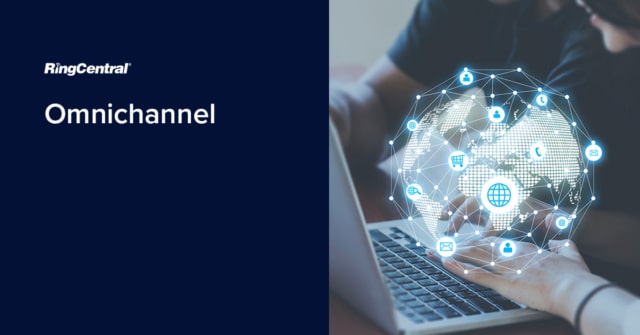The world of commerce is constantly evolving, both for businesses and consumers. As our customers become more tech-savvy and access different channels and platforms from a wide range of devices, organisations must strive to improve customer experiences and build and maintain better relationships.
By doing this, we enhance the experience of those consumers, but we also drive better conversion rates and customer retention, and those two factors lead to better profitability. One term that is often mentioned to achieve this is ‘omnichannel’. But what exactly is omnichannel, and what benefits does this strategy offer to your business?
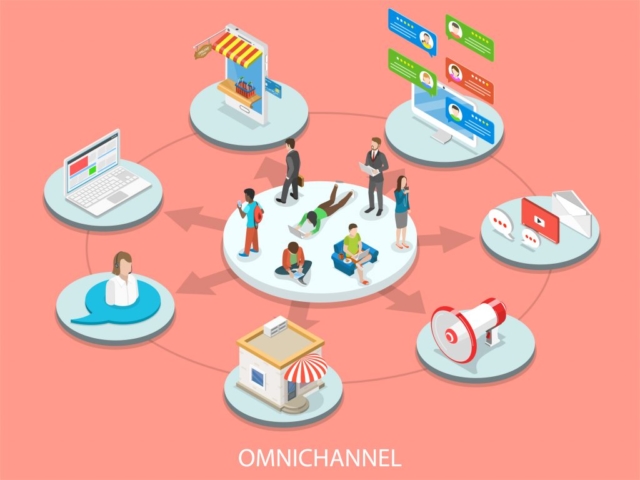
What is Omnichannel?
The literal definition of omnichannel is “all channels”. However, in marketing strategy, that does not necessarily mean all channels available to you, but more all channels that you actually utilise.
The most important thing to consider about an omnichannel experience is that it places the customer, or user, at the core of the strategy. Your strategy should prioritise communications with your customer base built on a foundation of why they use a particular channel – or channels – and where they are in terms of the customer cycle/life cycle.
Omnichannel marketing recognises that consumers may move from sales silos to sales silos. Instead of isolating channels as independent routes, omnichannel embraces spillover from and movement between those channels. It also integrates the physical or real-world aspects of your business with a virtual or online experience.
Before, you may have had boundaries between your organisation’s channels (social media, physical stores, website, mobile, etc.). However, omnichannel breaks down those walls and creates an open playing field, in line with your consumers’ views and their experience of your particular industry or retail type. Now, you want to provide a fully personalised experience.
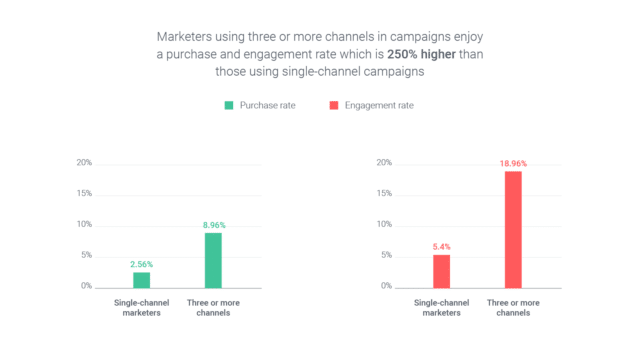
How does omnichannel work?
If you think about it, customers have been multi-channel for many years. They have always chosen a channel – or route – that best suits them and provides the best experience for them. Historically, before eCommerce, customers would be prepared to travel many miles to a particular physical store if they had received consistently good customer service there.
Omnichannel is about organisations adapting to that philosophy. It about recognises that customers will choose a convenient channel for them or which has proven to offer a positive user experience.
Essentially, omnichannel works by creating and providing a positive and seamless experience for your customers, one that is equal across any channels that they use, be it a physical store or your eCommerce website.
You are integrating every part of your operation to suit those customers and how they use and perceive the way your company does business. That integration will include all facets of your business, including sales, marketing, promotions, POS, and communications (including customer engagement and service).
By facilitating this integration, you are instantly improving the customer’s experience of any channels. It also allows them to crossover between your channels, check stock levels from their mobile device, reserve from that same device or another, and then pick up the actual item from the checkout at your physical store.
What’s more, that crossover also works from the perspective of your own staff. If a customer is in your actual bricks and mortar store, your staff will be able to refer to that customer’s history, previous purchases, etc. At its essence, omnichannel works by providing a high degree of flexibility to your consumers and equal flexibility in how you interact with them.
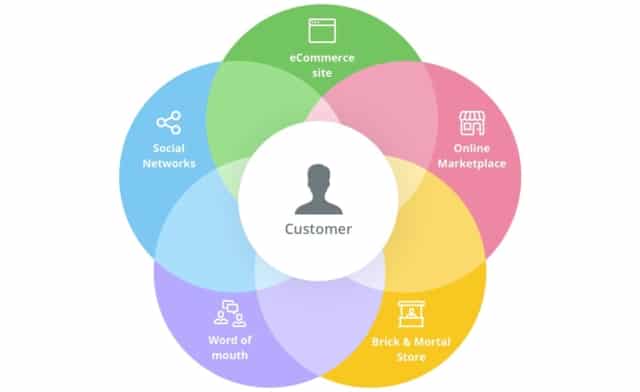
The advantages of omnichannel
As a business owner, you will want to know if switching to an omnichannel strategy will work and what the actual advantages are. It certainly seems to work if you look at relevant studies. One such study – in the prestigious Harvard Business Review – surveyed 46,000 shoppers. 73% of that number stated that they used multiple channels rather than just one or two.
So, we can see that this strategy works, but what are the actual benefits?
-
Customer retention.
Any business knows that retaining customers is an essential part of any long term success. By offering an omnichannel approach, you help ensure that your customers will return to use your services because of positive and consistent experiences.
-
Happy customers.
A happy customer is a customer you will both retain and make frequent – or regular – purchases from you. This will tie in with the service they receive at the point of sale and support services, including technical support, live chat, etc.
-
Recommendations & reviews.
Satisfied customers will not only keep using your business, but they are more likely to post positive reviews (which in itself can generate new customers) and to recommend your service to family and friends.
-
Increased Revenue.
Of course, those repeat customers and the new customers they direct to your company means an increase in revenue, something we all want to see. That survey from the Harvard Business Review concluded that your omnichannel customers could be 30% more valuable to your organisation than other single-channel consumers.
-
Organisational efficiency.
By integrating all your channels, you enhance the experience of your customers and improve the efficiency of your business itself. Streamlining your channels, and in particular, your databases makes your business and your product information or services more visible to existing and new customers.
-
Better data collection and analytics.
Once you have instituted an integrated omnichannel strategy, you will have a better overview of how consumers use your channels. You will collect more customer data on ‘when, how, where, and why’ they access different channels. This, in turn, allows you to utilise analytics better to keep improving the service you offer.
-
Bringing the real and virtual worlds together.
We all know the importance – and growth – of eCommerce in the modern world. But that is not to say that your offline channels should be neglected. The omnichannel strategy allows you to bring them together, cross-promote, and give customers a greater choice of how they access your business.
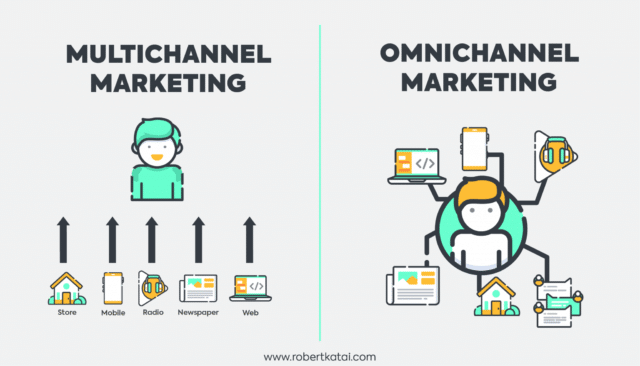
Omnichannel vs multichannel
The simplest way to differentiate between multichannel and omnichannel is to think of a multichannel approach focused on the organisation. In contrast, omnichannel flips that and makes the structure more customer-oriented.
A multichannel approach (also known as cross-channel) will see your marketing team attempt to communicate with customers and potential customers across multiple channels. These could include social media platforms, television or print advertising, websites, etc.
How you structure your multichannel strategy is going to depend on your target demographics. For example, if your target customers are under 25, you will likely focus on certain social media platforms to reach that audience. If your target is the over-50 group, you will be more likely to look at more traditional approaches such as print or radio advertising.
However, a multichannel approach can be complex and can also be disjointed. Individual channels often stay separate rather than integrating or working together. And with a multichannel strategy, any analytics can also be complex when seeking a good overview.
With an omnichannel approach, you remove some of the complexities and difficulties. You are building a strategy based on customer needs. Initially, that strategy may be built from the perspective of trying to think like a customer and not as a marketer. It can also include factors from previous data and other approaches you have utilised before.
And although you may build that initial strategy in different ways, you have to recognise that it will be an adaptive strategy that evolves and changes as you collect more data from and about your consumers. As that strategy grows, you can segment your customers into groups such as age, location, buying preferences, etc.
The channels you use, too, are viewed holistically. They’re part of your overall strategy and are unified to work together effectively. Customers or prospects can move seamlessly between channels, with no drop in quality of experience or service.

Omnichannel vs Omni-digital
While an omnichannel approach embraces all customer interaction points, both traditional and digital, an Omni-digital strategy focuses only, as the name suggests, on digital channels. This approach may be beneficial in areas where your customer or user base is predominantly young and prefer digital channels to other means.
In industries such as banking, more and more customers turn to digital channels and ways of communicating. Banking apps, live chats on websites, pop-up chatbots with messaging options for loan applications, and more have all dramatically grown in popularity within this sector. Giving every touchpoint equal importance can be crucial.
Having a highly-connected Omni-digital strategy gives customers what they increasingly want and offers a lot of benefits to the company itself. As well as increased touchpoints for your users, it also allows better use of digital tools such as analytics, CRM systems, and call platforms.
Another great benefit many organisations using Omni-digital find is the increase it gives inaccessibility. With such an approach, your business becomes 24/7, and also the increase in the quality of communications means that customers are happier and your teams are less stressed. This is something else that can aid with customer loyalty and retention.
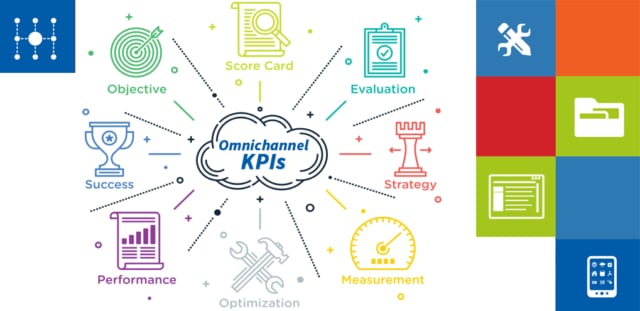
How omnichannel solutions help different industries
While much of the focus regarding omnichannel strategies has been on the retail and eCommerce sectors, it is a strategy that can provide benefits in a wide range of industries, from banking to healthcare.
1. Banking and Finance
This sector has seen the rapid building of digital capability as a response to the COVID pandemic. Although there has been this rapid building, some exceptions have fallen short such as data analytics and innovation. As this area grows across the financial industries, an omnichannel strategy will greatly benefit progress.
It allows customers to perform any sort of transaction via a mobile device or web app. It also allows them to access customer services via their laptop or handheld device. This can be a live agent chat or chatbots. And it also allows for data to be synchronised in real-time across all channels.
2. Government
The government has become increasingly more complex in recent years. And hand in hand with that complexity comes a seemingly never-ending list of rules and regulations that governments and their agencies must adhere to. These factors mean that the government can be slower to adjust to more modern methods than private sector organisations.
Given that a service user may have a long – and equally complicated – relationship with a particular agency, an omnichannel strategy makes perfect sense. For example, a housing benefit application can often take many weeks to complete. An omnichannel strategy allows the user to access all required services and for agency staff to see all previous interactions.
3. Healthcare
While healthcare in the UK remains mainly a public sector service, there are many ways where an omnichannel strategy can produce positive results. For any private healthcare providers – from clinics to pharmacies – omnichannel marketers offer a way to improve efficiency and increase customer satisfaction levels.
It can improve both the customer experience of the service and the efficiency of services for public sector providers. For example, rather than attend an in-person appointment (which may take more time and be inconvenient for the patient), they can choose different channels – such as video calling – for simple consultations that do not need physical interaction.
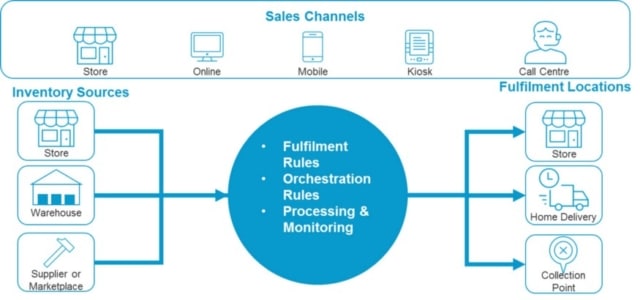
4. Retail
As we have previously discussed, the retail sector is where we see the most use of an omnichannel strategy. As we see, increases in technological innovations and customers’ behaviour, we also see a comparable increase in competitiveness. This is an area where an omnichannel approach can benefit retailers.
By making your business more customer-focused, you allow your customers to choose the sales channel that best suits their needs or the one(s) where they have the best customer experiences. This, in turn, leads to an increase in customer retention and sales.
5. Contact Centres
If your business uses a call or contact centre, you may think that switching to omnichannel means that your costs will increase. In fact, such a switch will lead to this part of your business is more cost-effective. It allows you to divert a portion of your agent workforce to areas other than basic customer service calls.
More and more customers prefer some form of self-service option over live contact. Adopting an omnichannel approach gives your customers a greater choice of how to communicate with you or choose self-service options such as chatbots. This frees up agents’ time to deal with more complicated enquiries.
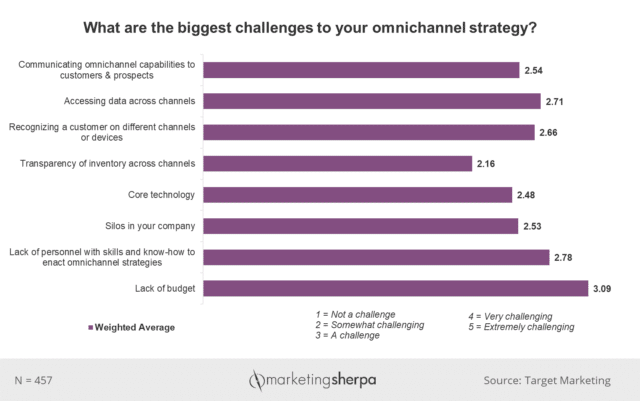
Omnichannel outlook and challenges
As the make-up of customer bases shifts from primarily baby boomers and Generation X towards millennials and Generation Z, omnichannel strategies become more important. There is increasingly less concern about traditional channels for purchasing and communicating as consumers shift to a more digital lifestyle.
Companies will need to move to a more omnichannel-centric strategy to recognise these changes in customer demographics. More and more of their customers will require choice in how they access services. While eCommerce’s growth and the effects of the pandemic have hastened many businesses adopting this, others have integrated it naturally.
The challenges facing companies looking to adopt an omnichannel approach may differ according to the sector you operate in. For example, in the retail sector, challenges may include inventory management, warehouse locations, staff knowledge, variations between stock in physical stores, online distribution, and technology.
One challenge many UK companies may face is that of data privacy. Although the UK has now left the EU, companies who want to do business in Europe will still be governed by the GDPR. This means that companies must be very cautious in how they implement data-related aspects of an omnichannel strategy.
How marketing leaders define omnichannel
1. Square
“Omnichannel retailing is an integrated approach to selling that enables customers to browse, shop, and purchase through a variety of channels, like a brick-and-mortar store, social media, website, and mobile.”
2. Hubspot
“Omnichannel means that your brand is capable of selling absolutely anywhere the consumer is willing to buy. There is no distinction between retail stores or eCommerce or mobile commerce or social commerce.”
3. Google
“Ensuring [retailer] marketing strategies are geared toward enabling customers to convert on any channel.”
4. BigCommerce
“Stores selling both online and offline – likely also selling through multiple online channels (i.e. on Amazon, eBay, Facebook, B2B). We’ve also been referencing the importance of listing your product wherever consumers are already spending their time. This is increasingly known as contextual commerce, a more strategic take on the overarching omnichannel term.”
What is RingCentral’s omnichannel contact centre solution?
When it comes to adopting an omnichannel approach, one element of prime importance is the technology you choose as part of your new – or improved – infrastructure. Identifying your needs and how they will suit your customers is the first step to a successful omnichannel setup.
For businesses who use a contact centre, Ringcentral’s solution may be a perfect choice. It offers premium solutions to all your needs for any form of communication channels, from traditional voice contact and quick access to a real person to discuss any issues or questions through monitoring and responding to comments and events on your social media.
It also provides you with live chat options on any web or handheld devices. You can also use live chat to connect your staff and teams to hold discussions or share information, reports, and files. And if you use SMS and emails to communicate with customers, Ringcentral offers intelligent options that enhance the customer journey.
Originally published Feb 22, 2021, updated Dec 13, 2023
